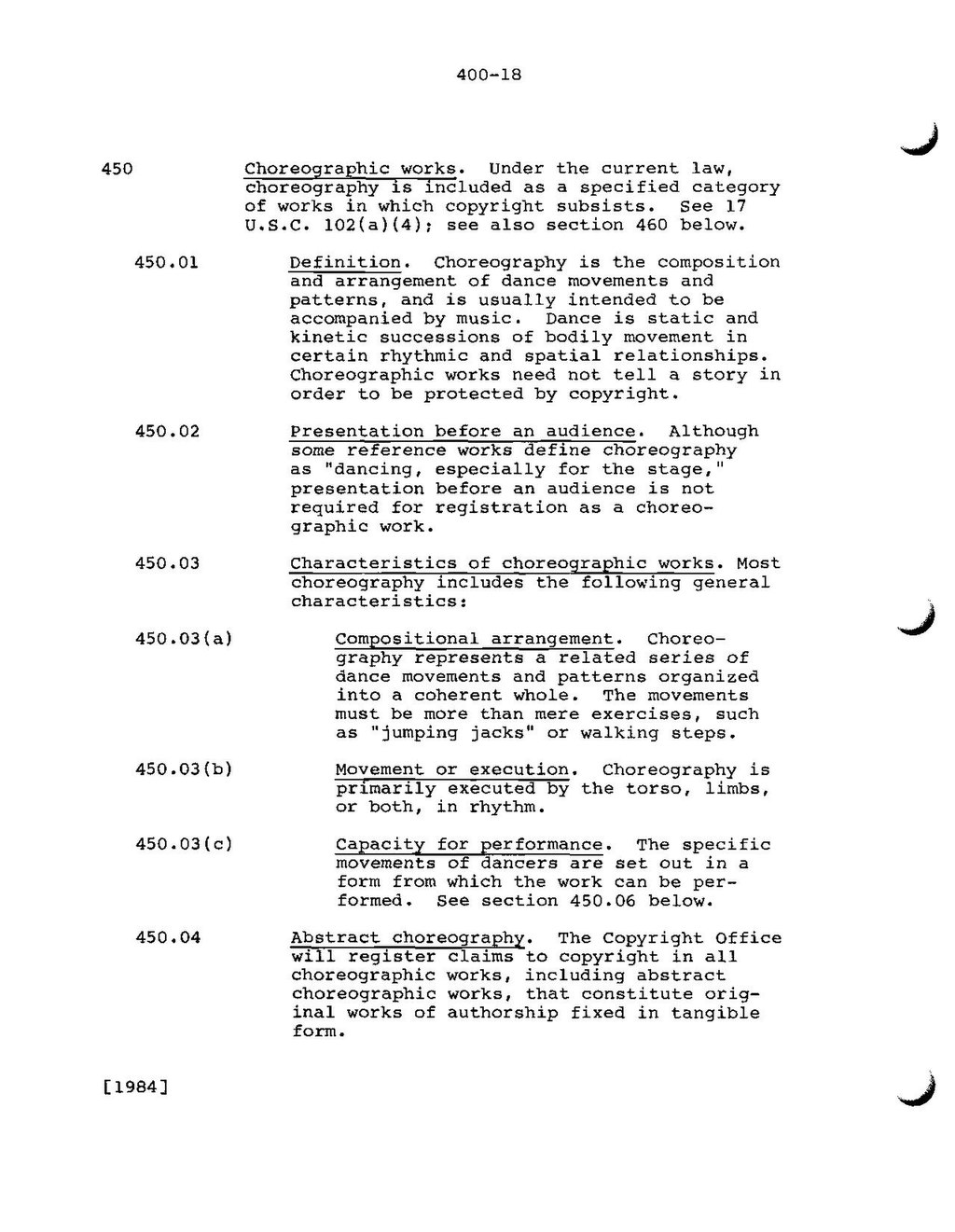400-18
450
Choreographic works. Under the current law, choreography is included as a specified category of works in which copyright subsists. See 17 U.S.C. 102(a)(4): see also section 460 below.
450.01
Definition. Choreography is the composition and arrangement of dance movements and patterns, and is usually intended to be accompanied by music. Dance is static and kinetic successions of bodily movement in certain rhythmic and spatial relationships. Choreographic works need not tell a story in order to be protected by copyright.
450.02
Presentation before an audience. Although some reference works define choreography as "dancing, especially for the stage," presentation before an audience is not required for registration as a choreographic work.
450.03
Characteristics of choreographic works. Most choreography includes the following general characteristics:
450.03(a)
Compositional arrangement. Choreography represents a related series of dance movements and patterns organized into a coherent whole. The movements must be more than mere exercises, such as "jumping jacks" or walking steps.
450.03(b)
Movement or execution. Choreography is primarily executed by the torso, limbs, or both, in rhythm.
450.03(c)
Capacity for performance. The specific movements of dancers are set out in a form from which the work can be per
formed. See section 450.06 below.450.04
Abstract choreography. The Copyright Office will register claims to copyright in all choreographic works, including abstract choreographic works, that constitute original works of authorship fixed in tangible form.
[1984]
